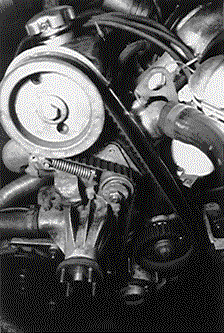|
My money is on a real simple cause: water in the gas tank. Even one lousy drop in the wrong place can freeze and keep fuel from passing. The fact that the car normally lives in a warm coastal environment gives me strong reason for this suspicion.
Unfortunately, there's no quick cure unless a garage is available. If there is, get the car into the garage and get a space heater going (be safe about it, please). You don't need toasty warm, you need maybe 5-10 degrees above freezing, and patience. If the car can sit overnight at 40F, that will be enough to allow any ice to thaw.
If a garage isn't available, here are a couple of things to try.
First - get at least two bottles of "dry gas" into the tank, followed by a couple of gallons of fresh gas. Put the dry gas in first. (And do this even if a garage is available!)
Next - this is really redneck, but it's worked for me. Get a roll of poly sheeting, and make a "skirt" around the car. I used the doors and hood and trunk to hold the poly in place, but duct tape will work, too. Make sure the skirt touches the ground all around the car. Then get a shop-vac and run it in reverse so it blows warm(er) air under the skirt. The key is that the whole fuel system from the tank to the engine needs to get warm, since you have no idea where the freeze-up is; there are lots of low spots from tank to injectors where water can settle and freeze.
Run the "hot air" setup for *at least* 2-3 hours before trying to crank the engine again. But the dry gas is important, and patience is a virtue.
Once the car is running again, fill the tank with fresh gas and use a bottle of dry gas at each fillup for the remainder of the trip in cold country.
|

